Innovative City Forum 2018 Speakers List


Photo@Haruo Wanibe
Cohost address on Day 1, October 18th
Hiroko Tsuka (Executive Vice President, The Japan Foundation)
ICF. Day3, Opening Session, The Japan Foundation Asia Center Session
Ben Suzuki (Director, Arts, Culture and Exchange Section II, The Japan Foundation Asia Center)
The overall theme of this forum is "Innovation for Happiness" and here at this Asia Center Session, we focus on the themes of Asian culture and art. The original meaning of the word "innovation" is "a new combination" or "fusion of different fields." I believe this provides us with a key to consider the relationship between innovation and our happiness. Does the technological innovation achieved by economic development really make us happy? Don't we need to rethink deeply about the word "innovation"? These questions form the starting point of this forum. From a viewpoint of Asia Center, as being a catalyst for exchange between people within Asian region, we want to look into this keyword "innovation" from a more close-to-life and vernacular perspective to find out about of the invisible or non-verbalized components that have existed - and will continue to exist - in our lives. We want to try connecting such components to technology already being used as human skills. With these key concepts in mind, we ask experts from various fields in Japan and Southeast Asia to share their views.
Opening Session
Megumi Sasaki (Producer / Director)
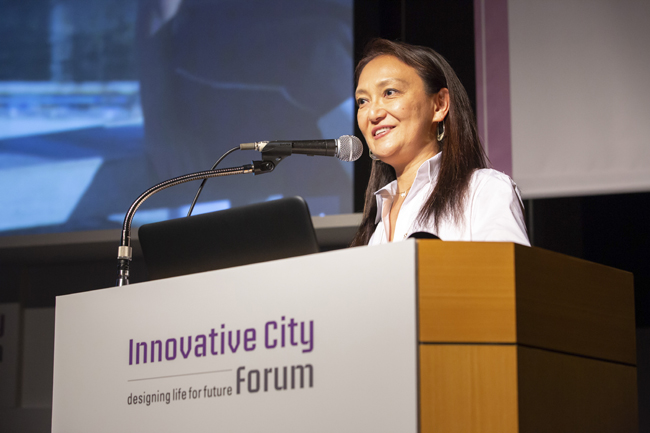
When I was offered the job as moderator for this session themed "Innovation for Happiness" forum, the two main husband and wife characters in my documentary film "Herb and Dorothy" came to mind. I continue to make films because I basically want to go on a journey to rediscover the initial motivation that drove me to make that film - I simply wanted to convey the emotions, how moved I was. In the four years it took to produce that film, through my interaction with Herb and Dorothy, I was given the chance to think deeply about what happiness really is.
After the film director Ms. Sasaki introduced herself, she spoke about the motivation behind making her latest documentary film "A Whale of a Tale." "We fight because of differences in language, religion and opinions, and this ultimately leads to war. I wondered why Japan, the condemned party, didn't express its opinion in this anti-whaling issue. Surely there are both sides to the argument. Why can't we understand each other? This questions is what lead me to make the documentary 'A Whale of a Tale.'" After these words from Ms. Sasaki set the tone for the talks, filmmaker Tran Anh Hung was invited up on stage and the keynote began.
Keynote "The Language of Cinema in screen image expression"
Tran Anh Hung (Filmmaker) × Megumi Sasaki (Producer / Director)
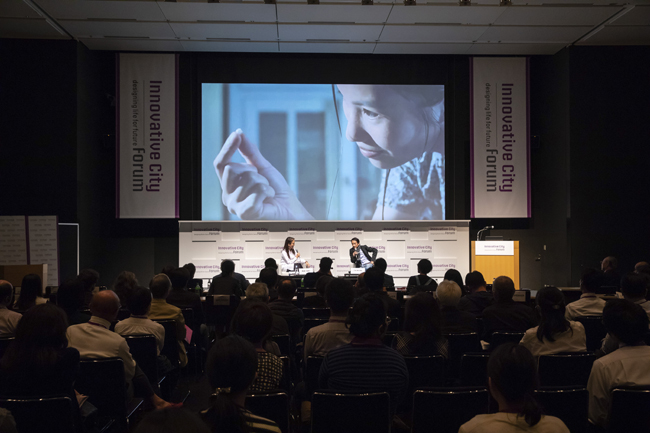

You can read more on filmmaker Tran Anh Hung's talk in our feature series, "Asia Hundreds," at the following website:
https://asiawa.jpf.go.jp/culture/features/f-ah-tran-anh-hung/ (Only in Japanese)
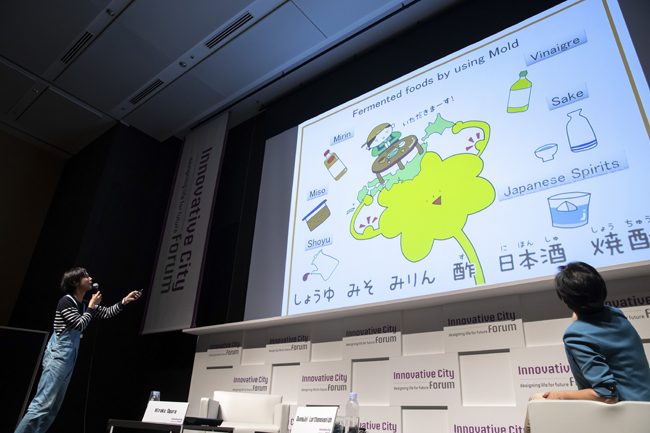
Talk Session 1 "Eat": Exploring Cuisines from Ancient Times to Cutting-edge Trends of Taste
Duangjai Lorthanavanich (Associate Dean for Student Affairs, Thammasat Business School) × Hiraku Ogura (Fermentation Designer)
The lifestyles and livelihoods of the people of continental Asia are replete with a captivating quality that the rest of us have struggled to grasp. This becomes especially clear when we focus on the subject of food. This session will explore the future of the sense of taste, which will play a role not only in the act of eating, but also in person-to-person interactions that begin in the places where people enjoy food together.
Ogura: As someone who holds the title "Fermentation Designer," I use my skills as a designer to visualize the invisible functions of microorganisms. For me, koji (rice malt) is the starting point for washoku (Japanese food) and I have been studying it for years. I believe washoku's fermentation culture is the result of limitations in Japan's land, not its richness, and that all its creativity was born from those limitations. Sake (Japanese rice wine), miso (bean paste), katsuobushi (dried bonito flakes) - these are all made with koji, but different kinds. Because of Japan's climate and land, edible resources are limited and we have created various food products using soybeans, rice and wheat. People don't seem to know much about the country's varied fermentation culture. Locals from various regions seem invigorated when we drink and eat their local products to try to rediscover their origins. I think this can be seen as a rediscovery of the locality that was lost with modernization, as well as an innovation starting with microorganisms. Tradition is far from dead. On the contrary, it is very much alive and happening. And to me, this is what makes Japan's fermentation culture interesting.

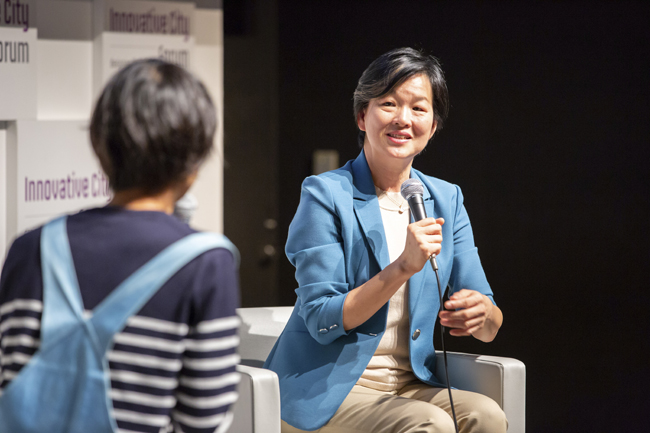
Photo@Tatsuyuki Tayama
Dr. Duangjai showed us how a community business effort in Thailand leads to enhancing the community itself by putting quality brands of traditional food and seasonings back on the map and making them relevant again today. Mr. Ogura spoke about young Japanese culinary experts who archived traditional foods that were only available in small communities and created new recipes for younger generations using them. He spoke of the frontline of fermentation culture, giving many examples of traditional "fermented foods" being revitalized as cutting-edge culture. The two also spoke of their hopes for the future, their wish to continue nurturing communities using creative methods, rather than focusing solely on profit-making businesses.
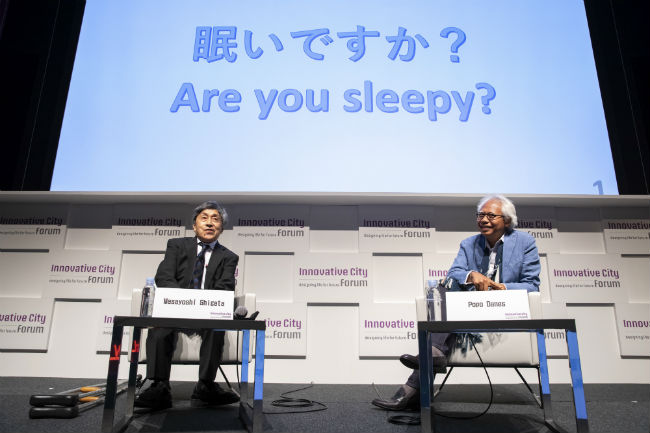
Talk Session 2 "Sleep": Wonder of Sleep – From All Ages and Cultures
Popo Danes (Architect) × Masayoshi Shigeta (Director, Center for African Area Studies, Kyoto University / Professor, Graduate School of Asian and African Area Studies, Kyoto University)
Although we spend roughly one-third of our lives sleeping, there are still many unsolved puzzles associated with sleep. Ways of understanding sleep and dreams have varied over time, and from place to place. Environment and culture have had a major impact on these differences. Paradoxically, unraveling the mysteries of sleep would also mean being awakened to the time we spend living in this modern era. This discussion will search for the secret to a good night's sleep, by examining humanity's experience of sleep around the world and throughout history.
Shigeta: Perhaps it is about time that we break away from the "sleep or wake-up" dichotomy when we think about "sleep". We place more weight on being awake because that is the only time we can do certain things, but I want to propose the idea of "sleep-centralism", which shifts the focus to the time we are asleep, as opposed to awakening-centralism, which centers on being awake during daytime. In other words, a break away from awakening-centralism! Why don't we cherish the sphere where both sleeping and being awake overlap? Rather than respecting the culture of being awake, the idea is to look at sleep as a form of culture and to value the area where the two overlap. I believe this way of thinking will ultimately lead to better sleeping habits. The issue is not the science versus culture dichotomy, but rather, the relationship between the two. Let's look at sleep from all angles and free ourselves from the constraints of sleep, creating free, rich and happy sleep. My message today is this: "Let's move on to rich and creative sleep by awakening to a new kind of sleep!" - although this begs the question, "So you were asleep after all?"
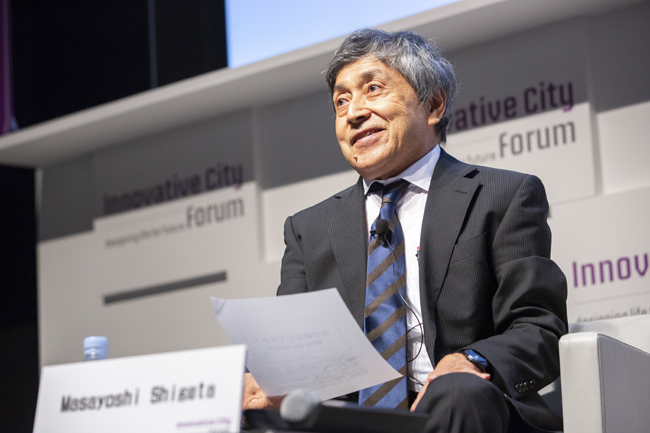
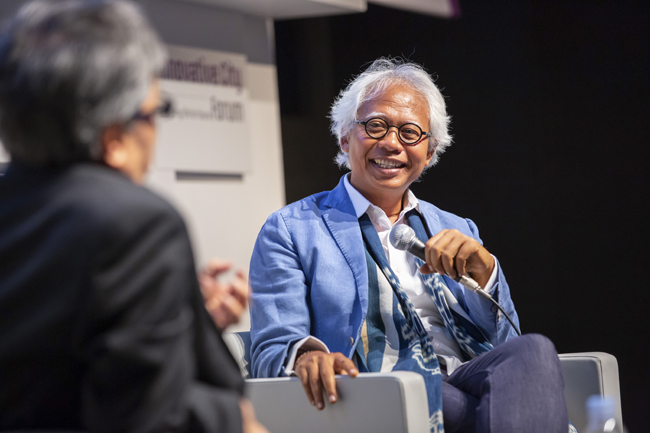
Photo@Tatsuyuki Tayama
Prof. Shigeta asked Mr. Popo what he prioritizes in terms of sleep when he designs architectures. Mr. Popo responded "In Bali, Indonesia, the connection with nature is very important. My design incorporates the natural environment into architecture, such as a big balcony that will bring in the wind, trees, the smell of nature, birdsongs." Prof. Shigeta also spoke about an international survey he conducted about sleep through with he found that, "Sleep differs with cultures as much as with countries. We use the term 'koshoku (eating alone)' to refer to eating alone, but the same can be said about sleep. We are seeing signs of changes in lifestyles related to sleep, in terms of how people interact and the proximity of people. In Asian countries, people seem to emphasize human relations as is the case in African countries. In the case of Japan, however, more married couples share a bedroom but sleep in separate beds." Mr. Popo also mentioned how he was surprised to hear that hotel resorts in Bali get requests from many Japanese guests asking for an extra bed, even though the rooms are already equipped with a king-sized bed. The venue was frequently filled with laughter during talks of cultural differences and changes of sleep.
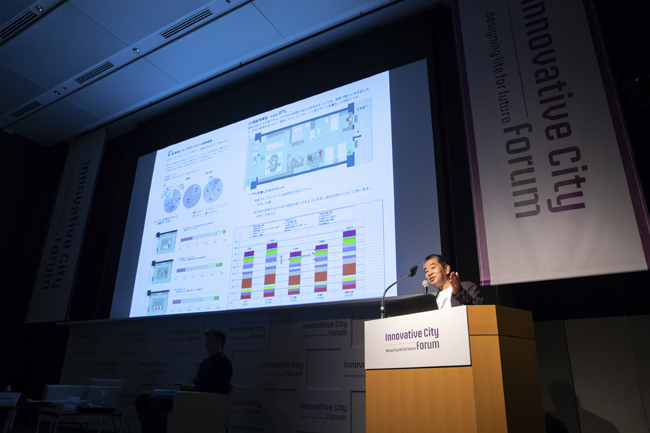
Talk Session 3 "Live": Future of Our Places-To-Be: Knitting Ties among Residents
Chatpong Chuenrudeemol (Architect / Principal, CHAT architects) × Sadao Tsuchiya (Lifestyle Expert)
The climate-conscious structures of the tropical and subtropical regions of Southeast Asia offer us the chance to discover a value system different from that reflected in the mainstream residential buildings of modern architecture. Designed by anonymous artisans, these houses coexist with nature, and do not use an abundance of energy, yet they can also work in concert with modern technology. In this session, together, and with an eye on the future, we will consider the matter of what kind of homes we should be building as we move toward a new era.
Tsuchiya: I have spent close to 10 years traveling within Asia. In 2004, I started working with Mujirushi Ryohin (MUJI) on creating their residential products, and did a lot of planning and thinking on what kinds of lifestyles people live, putting the focus on selling houses more than the house itself, and coming to a conclusion that my job was to sell "a container that holds in people's everyday lives." After that I began contemplating about what the contents of such container/house would be, and what kinds of lifestyles would people be living. A residence is a reflection of the social environment, and the development of skills. If we continue to live like we do today, we will find many people residing alone in all parts of the world in the future. How these people get connected with each other is an fundamentally important theme that goes beyond the discussion of houses. I believe that a happy future isn't something that lies in front of us obviously nor noticeably, but it is something gradually becomes visible as one continues to think about one's own idea of happiness and takes a closer look at small common activities of one's daily lives. I continue traveling within Asia because by doing so I become aware of how people can add happiness to their lives, not by pursuing luxury, but by finding happiness in their daily lives. It's not that a solid vision of a future exists in Asia, but that we can find clues on this topic in Asia. And from there, we can rethink about our future. I talked not about the answer to the question, "What is happiness?" but about "what does it mean to think about what happiness is.
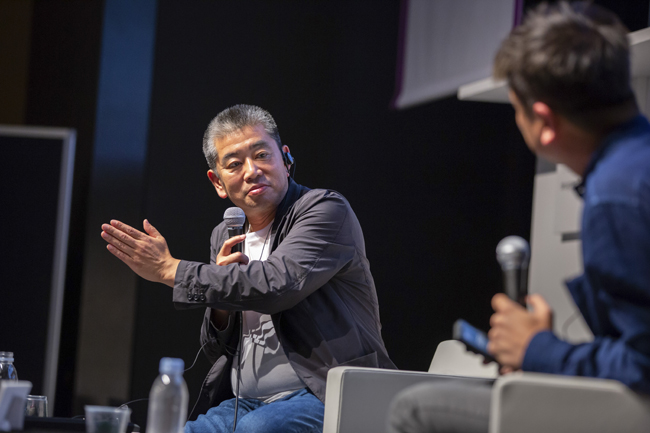

Photo@Tatsuyuki Tayama
Chatpong Chuenrudeemol gave a talk on his motive behind his project he presented on stage. When Mr. Chatpong returned to Thailand after studying Western architecture in the United States, all the information that was presented in Thai architectural books and taught in Thai university classes were about centuries-old Buddhist temples, royal palaces, and wooden vernacular architecture... nothing on current, local, and tangible typologies that would be of use in the design of present-day Thailand. If not re-creating outdated Thai historical architecture, Thai architecture's attention was unfortunately directed towards the overseas and finding out about worldwide trends. Mr. Chatpong explained that this was why he created his research and design focus, "Bangkok Bastards" which introduces contemporary real informal architecture that is commonly found (but looked down upon) on the streets of Bangkok, Thailand. These "bastards" include street food carts, construction worker housing, "curtain" sex motels, and many more historical yet contemporary Thai architectures that is still alive and relevant in Thai daily life... just not talked about because of its dark or low-brow character. This was his wake-up call to everyone that announce that now was the time to lay one's eyes on today's real Thai architecture.
Mr. Tsuchiya told us that traveling to different countries in Asia provides his mind with important clues. These emerging countries face many social challenges. The two days of the first half of ICF was centered on lectures about "cutting-edge technologies," but this session on Day 3 put the focus on Asia and analyzing the way of living. High-level technology would have been more important 10 years ago, but he feels that today, understanding the "way of living" has become an extremely significant issue. He summed up that looking ahead 10 years, there are many things that need to be considered on this theme of "way of living," and that he hopes young architects would forge new "ways of living."
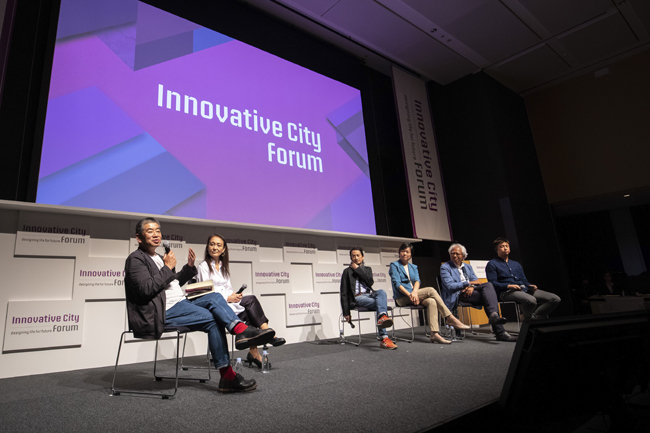
Wrap-up & Social Gathering
Megumi Sasaki, Sadao Tsuchiya, Tran Anh Hung, Duangjai Lorthanavanich, Popo Danes, Chatpong Chuenrudeemol
To wrap up the forum, the six speakers shared their opinions on technology and what happiness is to them.
Sasaki: This session today reminded me again that the core element of happiness in Asia is "social connection." Normally when working in New York, we would all get connected to the internet to have discussions online for having meetings. From the way it looks now, I feel that the advance of technology will continue to deprive us of actual, physical interaction. As technology evolves, we must also think about human happiness. Otherwise, our lives may end up being controlled by technology.
Tsuchiya: Asia's best appeal is their fun and admirable real-world interaction that takes place, but it is also true that we are seeing less of this. I keep telling myself I'd better go watch this now while I still can, before it's all gone. After participating in today's ICF, I now understand that there are slight differences among how the people of Japan and other Asian countries perceive the boundaries even for behaviors such as "eating" or "sleeping."
Duangjai: Happiness is something that is easily lost, so I think it is truly important to appreciate your emotions for every little moment, however small every episode may be.
Tran: Each and every one of us needs to find our own answer to the theme, "happiness", while already living with technology. The most important question is, "what is 'happiness' for me?" I think we all individually need to find out what can create "feelings of happiness to each and every one of us.
Sasaki: Happiness that lies right in front of you may be most difficult to see. As a result of pursuing efficiency and convenience, machines have been replacing humans and then many people have more of vacant time. If we don't have to work, then the next big issue becomes, "what do we live for?" "What is happiness," and "What is the meaning of your life" become fundamental questions that will be asked all the more so.

Chatpong: We need "sadness and pain" and "melancholy" to feel "happiness," so talking about "happiness" alone will only lead to an artificial happiness. True happiness exists together with sadness and other emotions. I think this is an important factor.
Tsuchiya: "Happiness" is the theme but if we try talking about "happiness" I have a feeling that the answer will move further away from us. Looking at everything other than "happiness" will, I believe, in a paradoxical way lead us to see what "happiness" is.
Popo: The first thing to do is to become aware of your own yardstick. "What brings me happiness?" Happiness for many is influenced by the surrounding environment or external measures. There is a danger that your yardstick and standard metrics may be replaced by other peoples' measurements. That is why it is extremely important to have your own true yardstick.
Sasaki: I hope everyone here today found some clues and take home a "little piece" of happiness.
Closing ceremony address
Ben Suzuki (Director, Arts, Culture and Exchange Section II, The Japan Foundation Asia Center)
Fumio Nanjo (Director, Mori Art Museum)
From "Technology oriented" to "Human oriented"
Suzuki: As was mentioned in the talks, what started out as "Technology-oriented" gradually shifted and eventually turned into something "Human-oriented." At the Asia Center session we tried to analyze and build discussions from a human-oriented standpoint. Can we have a word from Mr. Fumio Nanjo of the Program Committee?
Nanjo: We started ICF six years ago. The initial aim of ICF was to have multidisciplinary talks with those in the fields of science technology, art, design, architecture, urban design. Innovation has been considered as a necessity from the viewpoint of science and technology. Those in technology were relatively optimistic in their views, but since last year, there have been a little more skeptical views. Notably, suggestions were made from different viewpoints on what happiness is. What is the kind of innovation that brings us happiness? If technological advancement doesn't bring us happiness, perhaps we are using that technology in a wrong way. I felt such views were raised.
Today's session for this year was thus even more important. I think we have reached a turning point in our discussions, with feedback from Asia largely stimulating our discussions. I thank all the speakers and everyone involved. I look forward to seeing you again.
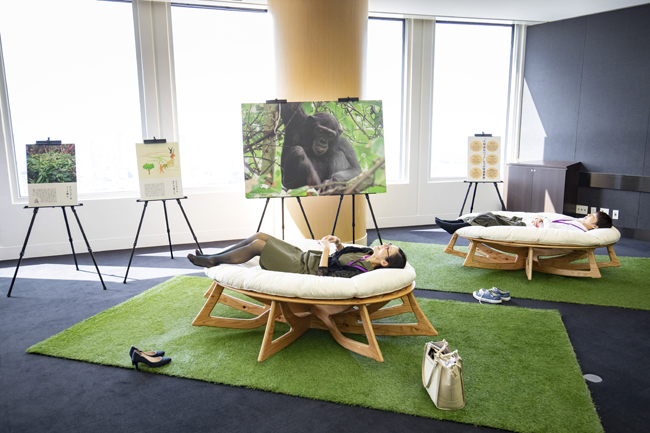
Interactive exhibit
As ICF Asia Center session's first initiative, we held an interactive exhibit. In relation to the "sleep" session theme, we set up a section where visitors could experience the "C-couch Human Evolution Bed."
Cooperation
"C-couch (Human Evolution Bed)" IWATA Inc.
Dr. Koichiro Zamma (chimpanzee photos)
NPO Research Association of Sleep and Society (display boards)
You can find the details of the day's program and a list of panelists at the following webpage:
INNOVATIVE CITY FORUM 2018 The Japan Foundation Asia Center Session
We'd like to thank the audience for taking the time to listen until the very end of the long-hours session. 89% of those who answered the questionnaire afterwards said they found the session "very useful" or "useful." We hope to see you again at the "Innovative City Forum 2019" in the next year.
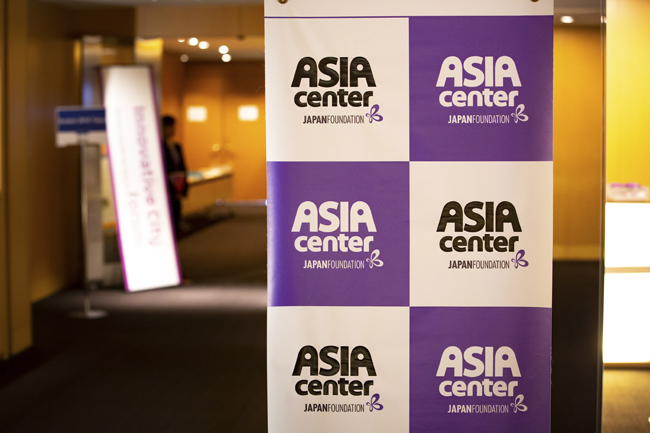
More Information
Innovative City Forum Official Website
Photo (Symposium): Tatsuyuki Tayama, Haruo Wanibe
Editor: Nakako Fujishige (Japan Foundation Asia Center)






